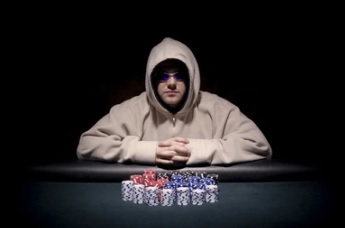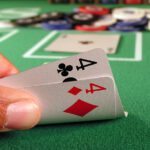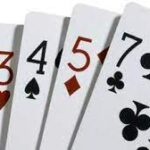Counting Outs Continued
In my last post I gave a very cut and dry example of counting outs when you have an open-end straight draw and it is very unlikely that anything else will win you the hand. In that case you have 8 outs.
In many cases your outs won’t be so cut and dry. For example if you have a hand like Ac5c on a flop of 2c9cJd it is obvious that you have 9 clean outs for the flush (any one of the 9 remaining clubs in the deck would give you the nut flush), however you also could very well win the hand if one of the remaining 3 Aces hit as well. So in this case you could have anywhere from 9 to 12 outs.
Likewise in many cases your outs will either be counterfeited or they could even be non-existent. For example, lets say that you had the same Ac5c as my last example but this time the flop comes 2c9c9d. Now it is still very possible that you have 9-12 outs in the hand, but it is also possible that someone has already flopped a boat or could get a boat even if another club comes and counterfeit your hand. So in this scenario you have anywhere from 0 to 15 outs (the 9 clubs, the 3 As, and the 3 5s).
So how do we count our outs in these cases (which come up so often)? All we can do is guesstimate. Here is my guesstimation which I use in most cases:
nut flush draw = 9 outs
one over card (meaning you have one card which is higher than all the cards on the board) = 1.5 outs
two over cards = 3 outs
the nut straight draw = 8 outs
the bad end of a straight draw = 3-4 outs (e.g. you have A7 on a 89T flop)
backdoor flush draw (means you have to hit both the turn and river to make your hand) = 1 to 1.5 outs
backdoor straight draw = 1 out
paired board, or a very co-ordinated board can often mean that you need to subtract 2-4 outs.
Some Examples
1) AhKh on a flop of 2h7hJd = 9 outs for the nut flush draw, 3 outs for the overcards, and 1 out for the backdoor straight draw (need to hit a perfect running Q and T on the turn and river) for a total of 13 outs.
2) 9h8h on the same flop of 2h7hJ9. Now I reduce our flush outs to 8 since it is possible someone has a better flush draw out there, we have no outs for overcards and it is unlikely that an 8 or 9 will win us the hand in most situations, but we do have 3 extra outs if any of the non-heart tens hit because that will give us a straight (you can’t count the ten of hearts as an out because we already counted it as a flush out). So in this case we would have a total of 11 outs.
3) 9h8h on a flop of 7h7dJh. In this case we have only 1 secure out and that is the Th for the straight flush. If our opponent has 77, 7J, or JJ we are drawing dead; further if our opp has say 7A and we hit the A of hearts then we still lose to his boat. But just because we might be drawing dead doesn’t mean we always are, in fact usually we are not. So in this case I reduce our flush outs even further because it is possible that unless we are drawing dead and say that we have about 6 or 7 flush outs, and that we still have about 3 straight outs. So in this hand I would say we have around 8 or 9 outs and I using the rule of 2 I would think that I would hit my hand by the next street anywhere from 15-20% of the time. So I would need at least 4:1 odds to continue.
Submit your review | |










